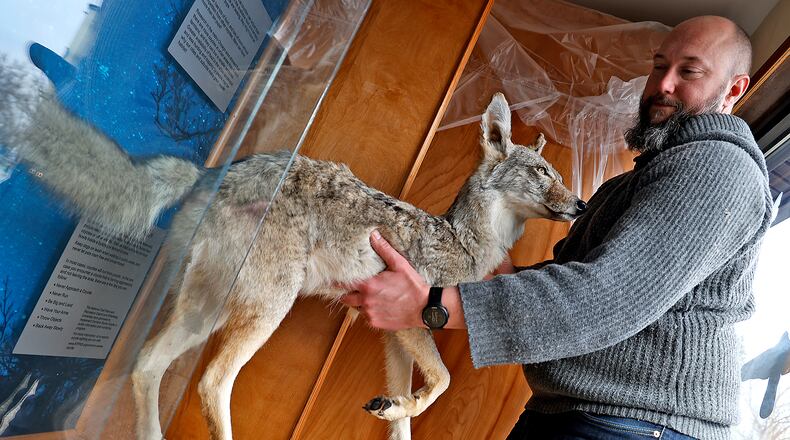One local resident said he spotted a pack of coyotes last weekend in the Northridge area.
Tyler Vanwey said he was driving down Ridgewood Road West and turned left onto Moorefield Road when he saw the coyotes.
“That’s when I noticed a coyote walking across the road,” he said. “As I passed where I noticed the coyote crossing the street, I saw a pack of about 6 to 7 coyotes roaming through the field.”
Vanwey added he has heard howling several times at night. Other social media posters mentioned seeing or hearing coyotes in the area.
Brett Beatty, wildlife management supervisor for the Ohio Department of Natural Resources’ Division of Wildlife, said he hasn’t had any calls specifically about this area, but noted coyotes can be found locally and all around.
“It’s fairly common throughout the state, urban environment, rural environment,” he said. “They are more active and more visible during late winter and early spring because it’s their breeding season and visible because there is no vegetation out there.”
He said in rural environments now there are no crop fields, and in urban environments all leaves have fallen during the colder seasons, so that’s why coyotes are more likely to be seen now.
Weather also tends to be a factor, Beatty said. The colder it is, the more resources an individual animal needs to survive, so they are also more active in that aspect.
“You put those three things together and you get more coyote sightings,” he said.
To help prevent coyotes, Beatty recommends to not “give them a reason to be back there” by avoiding feeding animals, especially coyotes, and by avoiding even leaving incidental food behind such as trash or grease traps on grills.
He said if you do decide to feed animals, even with bird feeders, don’t leave an endless supply of food out but instead keep the food out for a set amount of time before bringing it inside.
People who encounter a coyote can make themselves appear bigger and create loud noises to discourage the animals. Keep doing it until they leave the area.
“If you have a negative stimulus, it makes an animal uncomfortable for them to leave... Keep providing that negative stimulus, whatever it takes to make a loud noise such as pots and pans, airhorn, as long as there is an escape route,” Beatty said.
People who run back inside a house when they see a coyote is a positive stimulus to the animal, which will reinforce it’s OK to be a part of that environment.
In the last two months, residents of Kettering in Montgomery County and Lebanon in Warren County have voiced concerns about coyotes.
Kettering police posted a notice that said coyotes usually grow to between 25-35 pounds and normally feed on small mammals such as rabbits and mice. But they have been known to kill small dogs and cats as well.
Coyotes are curious but generally fearful of humans, according to ODNR. Clap your hands and shout to scare off coyotes that are investigating your yard. If the animal seems to lack a fear of humans or poses problems even after removing attractants, contact a nuisance trapper.
You can find a trapper near you by calling the ODNR’s Division of Wildlife at 1-800-WILDLIFE (945-3543) or visit www.wildohio.gov for more information.
About the Author

